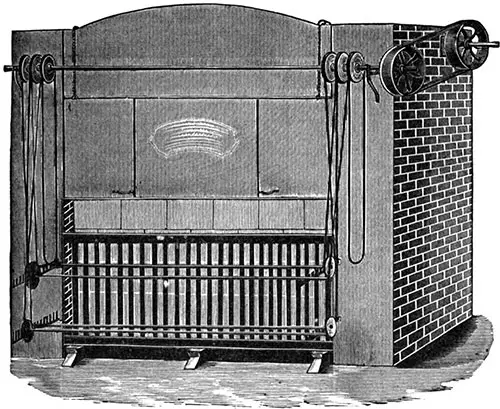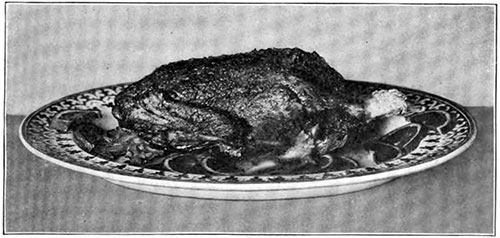Oven Roasting - Vintage Cooking Process

Roaster and Spits © 1920 The Epicurean
Roasting in the oven of ordinary coal stoves or ranges is not considered so good as roasting before an oven fire; nevertheless, it may be safely said that the greatest part of meat roasting is done in closed ovens. It appears; from various experiments that meat roasted or baked in a closed oven loses rather less of its weight than if roasted by an open fire.
It matters little how the roasting of food is effected, so long as the points previously named are observed, the main objects of which are to preserve the nutritive qualities, and to retain the juices, but the joint must be sufficiently seasoned and dressed just before serving.
The excellence of a roast depends to a great extent upon the amount of basting it receives.
Some cooks season a joint before it is cooked, whilst others season it with salt and pepper just before it is served. There is a difference of opinion as to which is the more correct way of the two. Meat of newly killed animals requires longer cooking than meat which has been hung [aged] for a time.
In warm weather, joints require slightly less time for roasting than in cold.
Boned, Rolled, or Stuffed Meats

Roast Duckling © 1912 American Cookery
Boned and rolled or stuffed meats require longer cooking than the same joints would if neither rolled or stuffed. The meat of young animals and that of old ones requires different treatment. As a rule, young flesh, containing less fibrin, requires longer cooking. White meat, such as pork, veal and lamb, should always be well cooked and must never be served rare. The proper time and process of roasting must be left to the good judgment of the cook, who must be guided by circumstances and conditions.
The cook's business is to serve the joint as full of nourishing qualities as possible. Though roasting is considered one of the easiest and most simple processes of cookery, it really requires quite as much attention to obtain perfect results as is necessary to prepare so-called "made" dishes, the recognized test for good cooks.
Table Talk: The American Authority upon Culinary Topics and Fashions of the Table, Vol. XXVII, 1912, A Series of Articles Published Throughout the Year. Published Monthly by The Arthur H. Crist Co., Cooperstown, NY. A Monthly Magazine Devoted to the Interests of American Housewives, Having special reference to the Improvement of the Table. Marion Harris Neil, Editor.
